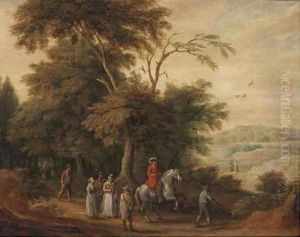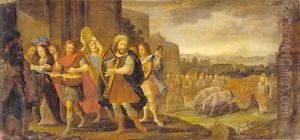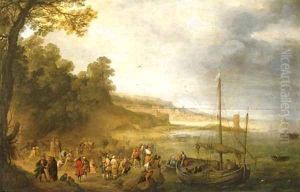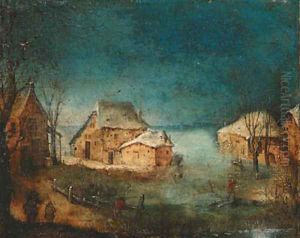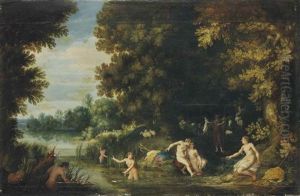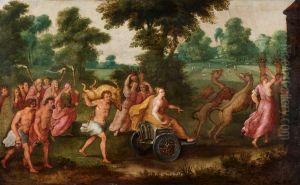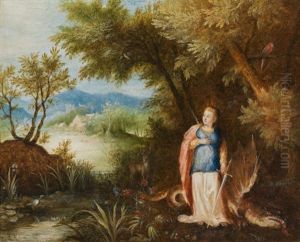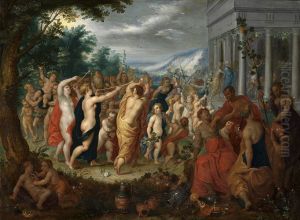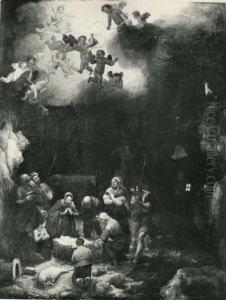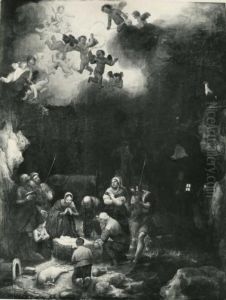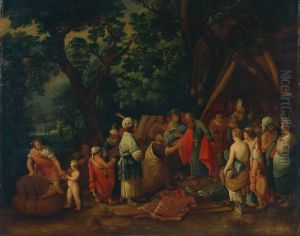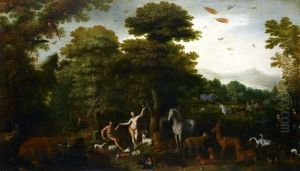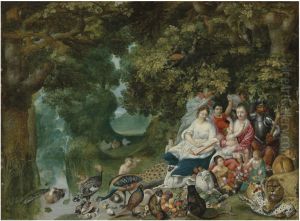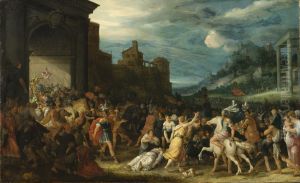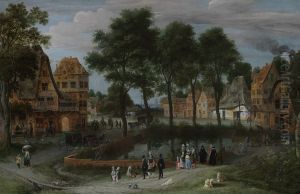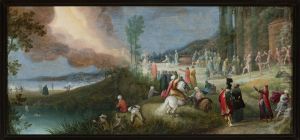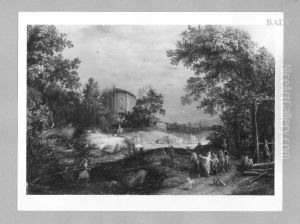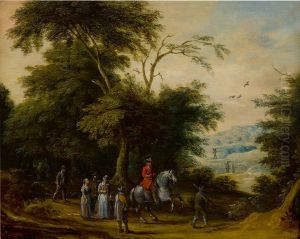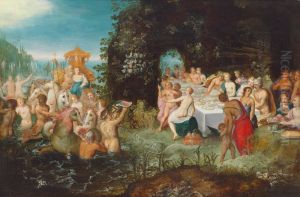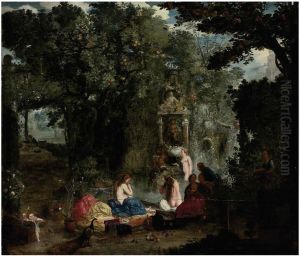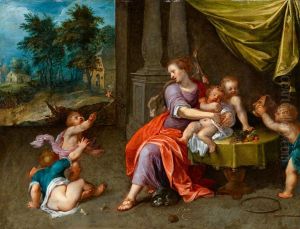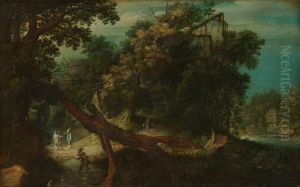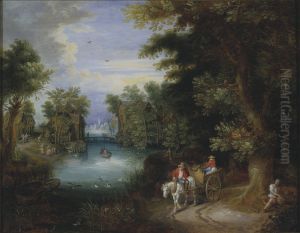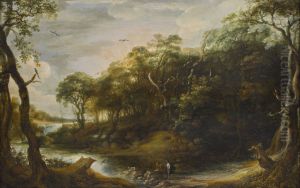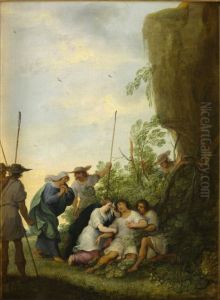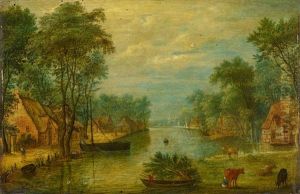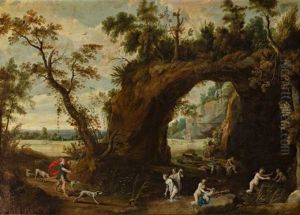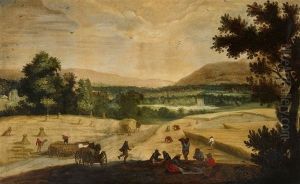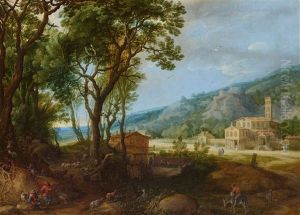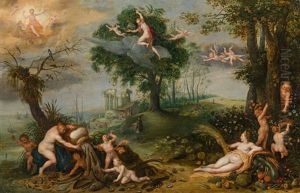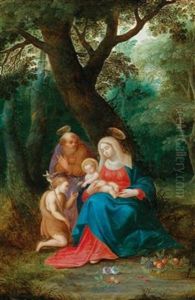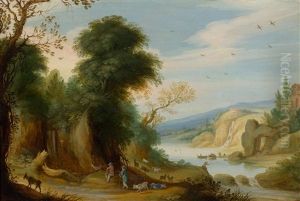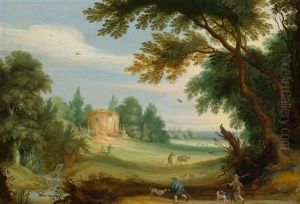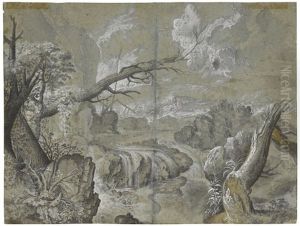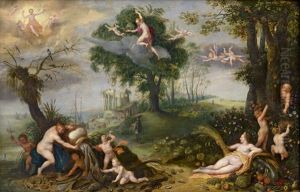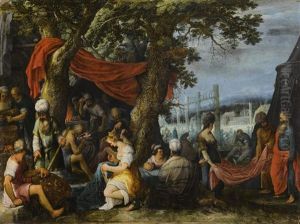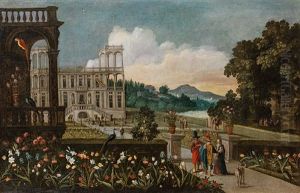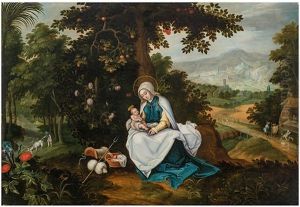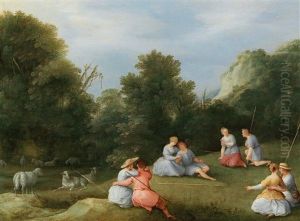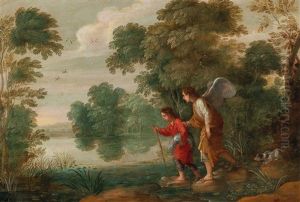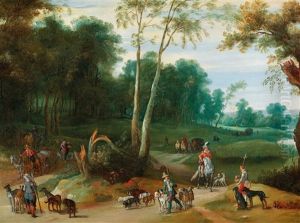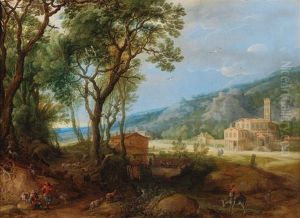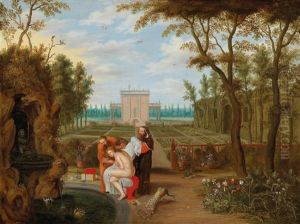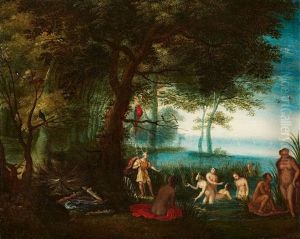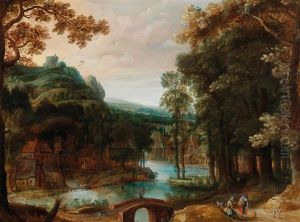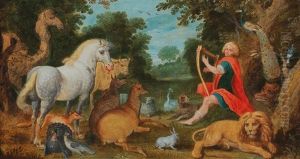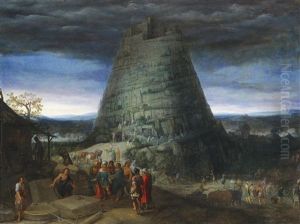Adriaen Van Stalbemt Paintings
Adriaen van Stalbemt was a Flemish painter, printmaker, and art dealer who was born in Antwerp in 1580. His work is often associated with the Baroque movement, which was characterized by dramatic expression, rich coloration, and bold use of light and shadow. Van Stalbemt was known for his detailed landscapes, allegorical scenes, and his ability to integrate different subjects such as history, genre, and still life into harmonious compositions.
Van Stalbemt trained under the landscape painter Jan Brueghel the Elder, who had a significant influence on his style and choice of subjects. Throughout his career, Van Stalbemt developed a reputation for his small-scale, highly detailed paintings that often depicted mythological or biblical stories set within lush, verdant landscapes. He also painted pure landscapes and seascapes, which were rare at the time, as well as scenes of witchcraft and alchemy that reflect the period's fascination with the occult.
In addition to his painting, Van Stalbemt was an active member of the Antwerp Guild of St. Luke, the city's painters' guild, and he served as its dean in 1610. This position put him at the center of the artistic life of the city, which during the 17th century was one of the most important art centers in Europe. He also took on students and apprentices, thus contributing to the dissemination of his style and the Baroque movement in the region.
Adriaen van Stalbemt's works were highly esteemed by his contemporaries, and he received commissions from wealthy patrons, including members of the nobility and the royal court. His paintings can be found in several major museums around the world, such as the Prado in Madrid, the Hermitage in St. Petersburg, and the National Gallery in London. Despite his success during his lifetime, his name is not as widely recognized today as some of his contemporaries, such as Peter Paul Rubens or Anthony van Dyck.
Van Stalbemt continued to paint until his later years, and he died in Antwerp in 1662. His art remains an important example of Flemish Baroque painting, and he is remembered for his contribution to the development of landscape and allegorical painting in the early 17th century.
